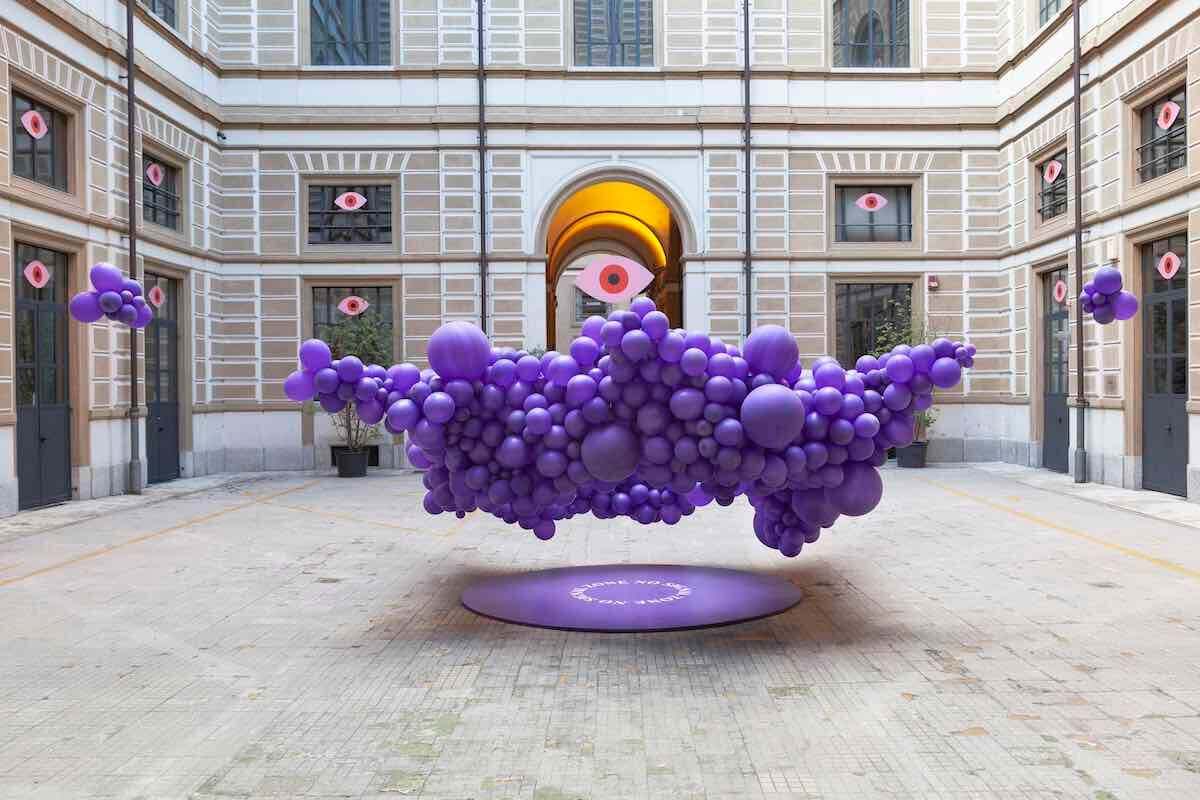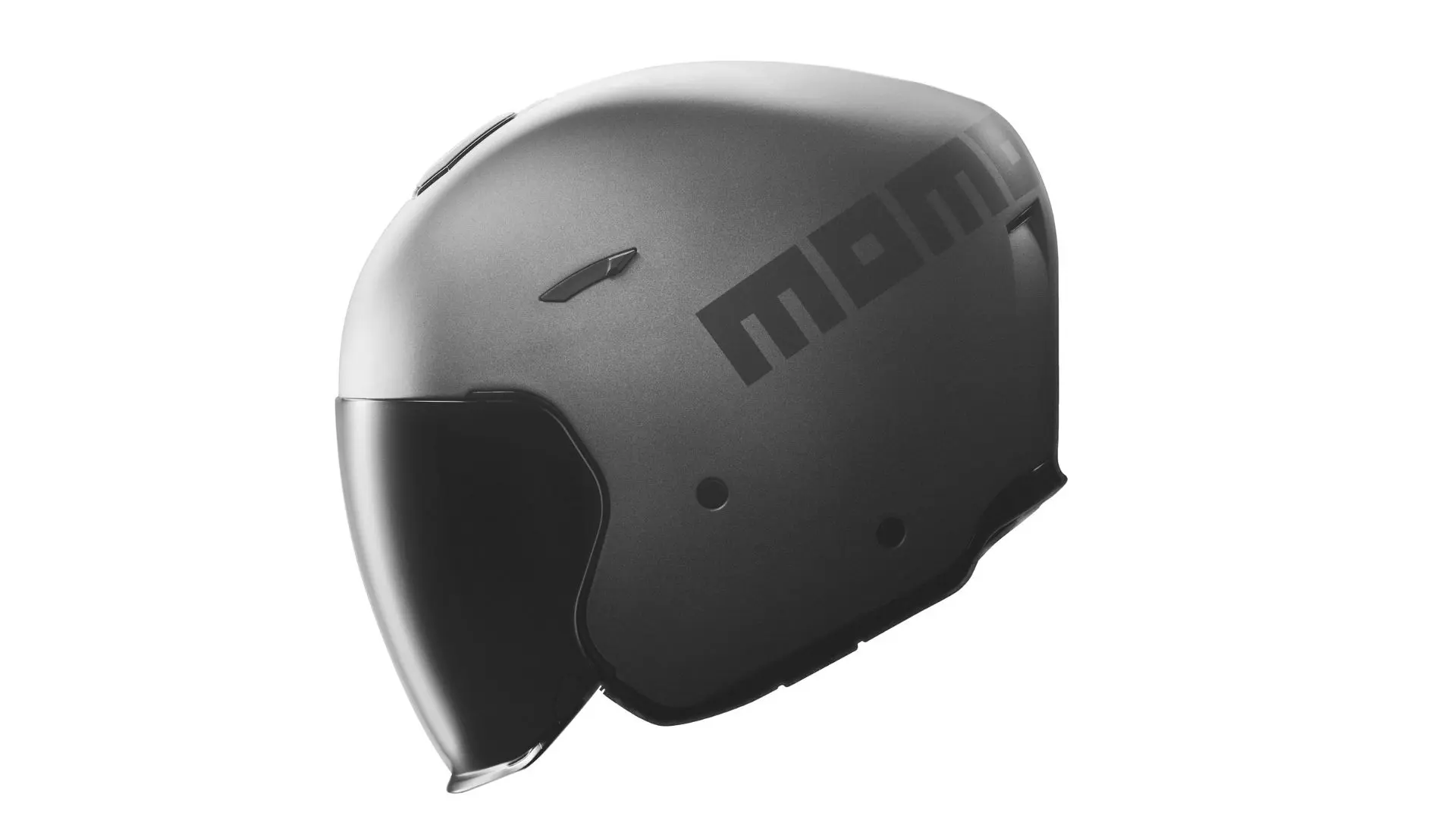Design as a narrative tool – Interview with Sara Ricciardi
Born in Benevento but Milanese by adoption, designer Sara Ricciardi is putting a new face to contemporary Italian design through eclectic and experimental creations that play on emotion.

Multifaceted, eclectic, experimental, and unstoppable, these are few of the words that describe Italian designer, Sara Ricciardi.
Based in Milan but with roots in Campania, Sara is one of the most interesting and unique up-and-coming designers changing contemporary Italian design today.
Characterized by an exuberant charm and a poetic nature, Sara works within the broad perimeters of design leaping through fields with fluidity and ease.
Her work includes objects, installations, spaces, digital products and so much more.
With an approach rooted in deep narrative exploration, Sara’s creations follow a “form follows the message” mantra that allows her to deliver endless poetry while creating a deeper connection with people through design.
Protagonist of countless exhibitions, collaborations, awards, and recognitions, Sara constantly evolves and presents something new and unexpected.
Most recently, the designer was part of the fair EDIT Napoli where she presented a new collection of objects in collaboration with Simone Piva.
Captured by her eclecticism and poetry, DesignWanted had the opportunity to interview Sara Ricciardi and find out more about her journey, her new collection ORA, her Milan Design City 2020 installation, and what is next for the mystifying designer.

Who is Sara Ricciardi? How did your journey in design begin?
Sara Ricciardi: “Sara is a woman, a witch, a child, a designer, a lover, a researcher, a collector, a curious one. I started with design as an intersection of planned randomness. I wanted to materialise my thoughts.
I arrived in Milan to understand matter and face the body, to acquire a method.
Design for me is a great narrative tool to convey messages. I can’t find a precise beginning because it is always a whole journey.”

Your work on products, installations, spaces, workshops and much more. Why? What keeps you going and what is at the basis of all the works you develop?
Sara Ricciardi: “For me, design is a methodology, I don’t have a defined style, I work within the broad perimeters of design.
Whether it is a service, a product, an interior, a pedagogical path, an installation, a digital event, today you have the fluid possibility of taking multiple forms if you can manage the process.
And in the possibilities, I jump into it. Because conveying a message means having different forms depending on the situation, the users, the moods.
I like to think that I experience a somewhat “situationist” design, a hybrid one.
Sometimes is a risk and can be misleading, sometimes is impossible to define, but I care little about labels.”

Should people care more about design? Or should design care more about people?
Sara Ricciardi: “Is a tiramisu or a parmigiana better? Is it better to be with your boyfriend or friends?
I have never liked the AUT AUT game. We must want EVERYTHING.
People must love sentimental, thoughtful design (even if risk entering into a very broad theme on the relativity of aesthetics).
So I prefer to say: People must create bonds with the material that surrounds them, we must become animists and thus begin to evaluate the panorama of our objects more carefully.
Venture into the field of selection! And at the same time design must be less aggressive and combative and instead ready to formulate territorial, participatory planning issues, to suggest messages and practices to people.”

We recently met at EDIT Napoli, how was your experience with the fair this year?
Sara Ricciardi: “I loved EDIT Napoli’s daring spirit to be present in this year of brutal complexity.
A year full of mines, exploded and unexploded.
I found EDIT to be a wonderful shared moment.
Not only there were companies, designers, galleries but there were first and foremost People.
Between confrontation and dialogue, the atmosphere of Naples takes you to a relaxed situation.
In the shadow of Vesuvius, you resize your fears to become more fatalistic and dynamic.
EDIT is a beautiful high-quality fair that brings light to the south, in the heart of Naples, a city that I love deeply.”
Curious to know more about the EDIT Napoli fair? Don’t miss Ready for EDIT Napoli? Interview with founders Domitilla Dardi & Emilia Petruccelli.
Your collection of ethereal objects presented at EDIT Napoli is called ORA, what’s the story behind it?
Sara Ricciardi: “O R A is a collection of tools for the stimulation of a slow daily ritual, created for Made in EDIT in collaboration with Simone Piva.
Six objects that mark a sequence and determine precise gestures.
A ritual of energetic opening and self-care. It is essential for each person to reserve time for him/herself within a day. A moment of meditation and prayer.
ORA is in fact the Latin verb that indicates the action of praying in the famous Benedictine warning: “Ora et labora” meaning “pray and work”. In a world devoted to maximum productivity, it is necessary to make space for prayers.
I created objects that could suggest this practice exercise and daily discipline are necessary for good breathing, body listening, and great concentration.
It starts with the lighting of a fountain, the cycle of water in its complete form of perfection of the circle, like a uroboros, a circuit that closes in on itself, since everything flows but everything is cyclical.
Then there is the lighting of a censer for olfactory stimulation through incenses, after which we move on to the two massagers for the opening of the channels of the hands and feet by rubbing them on the pointed slabs of pink quartz, the stone of the heart.
After these steps there is an open hourglass in which, once activated, you can feel the time passing in the palm of your hand for 15 minutes.
The glass cone returns an inverted pyramid of time in the hand. Finally, a series of specific weights for a delicate muscle strengthening through matter.”

We loved your installation at Milan Design City 2020. What pushed you to create No Signal Zone?
Sara Ricciardi: “5 VIE district gathered multiple designers to formulate a response to the stagnation of this period.
To create a cardiac resuscitation of the city of Milan and I, together with other colleagues, wanted to take part.
Personally, post lockdown, I wanted to reflect on digital bulimia.
On the struggle of opposites: physical VS digital.
The need for hyper connection and the need to escape it. And the more we are ubiquitous and available, dematerializing our body to appear in every screen format, the more we feel a call to return to the molecules of our flesh.
At this very moment in history, I wanted to imagine that people could have an option of unavailability, which armed themselves with app shields to escape the coordinates set by the system.
Can we shelter ourselves from the big eye of omnipresent control?”

Sara Ricciardi: “I materialized a purple cloud of system interference in the courtyard of the SIAM to make geographic portions, individuals and places disappear from satellite radars.
In addition, two Instagram filters NO SIGNAL FACE and NO SIGNAL SPACE activate a screen as protection from our big eyes, for us as people or for entire spaces.”
Fluid architectures to shelter, clouds of salvation activated via Instagram from our smartphones. Here we are always falling into a “dichotomous application”.
Wanting to temporarily disappear from the operating systems, marketing, GPS, cameras, immunity apps, those for “social credit”, counting steps and calories, columns from sales campaigns, telephone companies, everything, except ourselves.
Not being accessible, not being present.
But are we really so capable of keeping away from it?
It was also interesting to have generated the opposite effect with a barrage of posts and selfies. And here it is the “Selfie ergo sum”: protagonism & privacy.
It was a provocation to reflect on our relationship with the great, wonderful, and terrifying technology.”

Despite the strange times that we are going through, what are you planning next?
Sara Ricciardi: “I have a great passion for performance and theatre, I would like to express it into the formulation of complex living spaces.
In other words, in my opinion, our living is enhanced in schematic geometric executions.
The narrative of a house is mostly empty and never infused with the incredible identity of those who live there. Is designed as a hollow container in which we stuff objects.
I would like to design spaces as a work of art linked to individuals.
Helping transform people into aesthetic psychogeographies, into new imaginaries and proxemics.
In 2021 I will inaugurate the new studio, Pataspazio, which found its gestation precisely in the pandemic period as works stopped and I managed with my studio to focus on the depth, on our intimate, and make it a project.
I would like to inaugurate a visceral and theatrical design of spaces and be able to translate people into real sets of living. This is my new work obsession.”
Sara Ricciardi was one of the designers participating in EDIT Napoli, find out more about the other Italian designers who participated and don’t miss Writing the history of metal – Interview with De Castelli.















